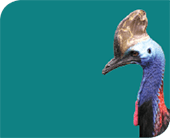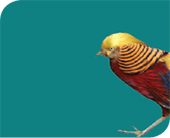Owls & Birds of Prey

There are over 213 species of owls which can be found on all continents except Antarctica. Owls live in a variety of habitats from thick forests to open prairies. Males and females are generally similar in appearance, although the female is usually 25% larger.
Owls cannot chew their food, so small prey is swallowed whole and larger prey torn into small pieces. Several hours after eating, the indigestible parts (fur, bones, teeth and feathers) are compressed in the gizzard and regurgitated as a pellet.
DID YOU KNOW – Some owl species can hear sounds 10 times softer than a human ear can pick up.

MacKinder’s Owl
The MacKinder’s Owl. Diet: Distribution: Discover more Owl species which live at Birdland Park & Gardens.

Spectacled Owl
The Spectacled Owl is a large tropical owl native to the neotropics. They have a life-span of approximately 35years and have 1 - 2 young. The owlet will leave the nest at 5-6weeks old however it will still be unable to fly. The owlets remain with their parents for the...

























